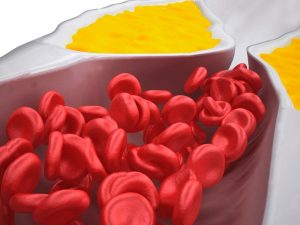If you Google “weight loss” or “healthy eating” you might be overwhelmed by all the different diets, and tricks and changes being thrown at you. It seems as if every other day there is a new, magic diet using words such as “quick” and “easy”. There is no quick and easy way to being healthy. Healthy eating habits are a lifestyle choice, not a trend, and it takes work.
As you embark on a health journey, be kind to yourself and allow room for error. Becoming obsessive or rigid with your eating can lead to disorders such as anorexia and bulimia, so make sure you go into the process with your overall wellness in mind. And, yes, that can include an occasional piece of chocolate cake.
By the Numbers
- More than one-third of US adults suffer from obesity.
- Non-Hispanic blacks have the highest age-adjusted rate of obesity (48.1 per cent).
- Obesity is higher among adults aged 40-59.
Take the Steps
Changing your lifestyle in any way can seem daunting. Eating habits are often ingrained from childhood, so cut yourself some slack as you learn how to eat better. The Centers for Disease Control and Prevention (CDC) suggests a three–step method to switch your current eating into healthy eating habits.
- Reflect: Before you make any changes it is important to reflect on your eating habits. You might be practicing bad eating behavior and not even realize it, or you might already have some positive behaviors that you can build. The CDC suggests keeping a food diary for a few days. List everything you eat and at what time of the day. After a few days you can reflect on your eating habits, perhaps pick out particular trends; perhaps you don’t eat breakfast and eat a giant meal at night, or eat sugary snacks at work. Whatever your habits, a food journal can help identify them so you can start making changes.
- Replace: Once you have identified unhealthy practices you can start the work to replace them. Take the example of sugary snacks at work; these will give you a sugar rush, then leave you feeling lethargic for the rest of the day. Clearing your cupboard can help to prevent temptation. Pack an energy-rich snack such as almonds in your lunch. When you get the urge to snack you will have only a healthy option. Eating healthy is not only about the food but your eating schedule. Many of us have busy routines that can put healthy eating on the back burner. Planning is another essential part of eating well. If you don’t have time to make a healthy lunch and snack in the morning, do it the night before. Prepare meals for the week at the weekend by cutting up vegetables, making rice, defrosting chicken breasts and packing them in air-tight containers. When you get home from work you can simply heat your meals. Healthy nutrition comes from not just eating smart but from planning smart.
- Reinforce: This is perhaps one of the hardest steps, although it might not seem like it. Consistency is the name of the game when it comes to healthy eating. Again, this is not a quick fix or trend, but a change in lifestyle. You have to reinforce these new behaviors, so they become intuitive habits, and that takes time. The same way it has taken you years to build up your unhealthy ways, it will take time to break those down and replace them with new ones. Don’t lose heart.
What Can I Eat?
Articles about nutrition and health seem to focus on what to avoid. It might even feel as though nothing is safe. However, there are plenty of delicious and nutritious options for you to enjoy. The CDC lists broad guidelines and foods that you can stock up on:
- Healthy fats: Fats? Healthy? Yes. Monounsaturated and polyunsaturated fats are not only food for you but vital for the brain and heart. Limit bad fats such as trans fats.
The grocery list:
- Lean meat.
- Fish (salmon, tuna).
- Avocado.
- Nuts/seeds.
- Olive oil.
- Cut out sodium: This is something to avoid, with good reason. Sodium can raise blood pressure, putting you at risk of heart disease and stroke. However, there are products labeled “low sodium”. Foods high in sodium are processed and prepackaged items.
The grocery list:
- Lemon juice: Use as seasoning as a replacement for salt.
- Fresh herbs: Another salt replacement.
- Fiber: Products with fiber provide healthy nutrients that make you feel fuller for longer. Fiber can help controls your blood sugar and lowers cholesterol.
The grocery list:
- Fresh fruits and vegetables.
- Whole grain bread.
- Peas.
- Beans.
- Oatmeal.
- Veggies: This seems like a no-brainer when it comes to healthy eating but not all veggies are created equal. A good rule of thumb is, the more colorful your plate the healthier it is. Dark green leafy vegetables and tomatoes, for example, have far more nutrients than their lighter-colored counterparts.
The grocery list:
- Peppers.
- Broccoli.
- Kale.
- Tomatoes.
Remember, these are just guidelines. You do not have to give up all the foods you love, but with healthy eating comes moderation. If you have unhealthy vices, eat them perhaps once a month and in smaller amounts. A good compromise can be finding healthy substitutes or lower-calorie options.
The secret elixir
A healthy eating list would not be complete without including water. Your body needs water. It helps maintain body temperature, protects joints and tissue, and gets rid of waste through urination and bowel movements. Carry a water bottle with you to remind yourself to stay hydrated. Replace sugary drinks with water at mealtimes. You can spice up water with cucumber, lemon or lime.











